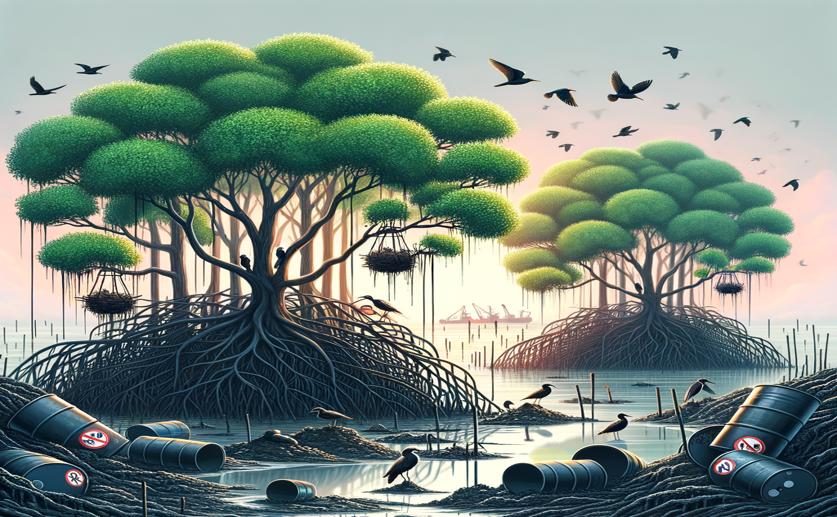
Improving the Resilience of Black Mangrove Trees to Oil Pollution
Greg Howard
6th May, 2024

Image Source: Natural Science News, 2024
Key Findings
- In Gabon's Ambowé mangrove, pollution reduces protective compounds in mangrove wood
- Polluted mangrove wood shows structural changes, making it more prone to decay
- The study indicates pollution may lower the carbon storage capacity of mangroves
EnvironmentPlant ScienceMarine Biology
References
Main Study
1) Modification of the chemical composition and the natural durability of Avicennia germinans mangrove tree of the estuary region of Gabon exposed to marine hydrocarbons pollution.
Published 3rd May, 2024
https://doi.org/10.1016/j.marpolbul.2024.116196
Related Studies
2) Fate and effects of anthropogenic chemicals in mangrove ecosystems: a review.
3) CO2 efflux from cleared mangrove peat.
4) Impacts, recovery rates, and treatment options for spilled oil in marshes.
5) Factors contributing to dwarfing in the mangrove Avicennia marina.
Journal: Annals of botany, Issue: Vol 97, Issue 6, Jun 2006



 29th April, 2024 | Jim Crocker
29th April, 2024 | Jim Crocker